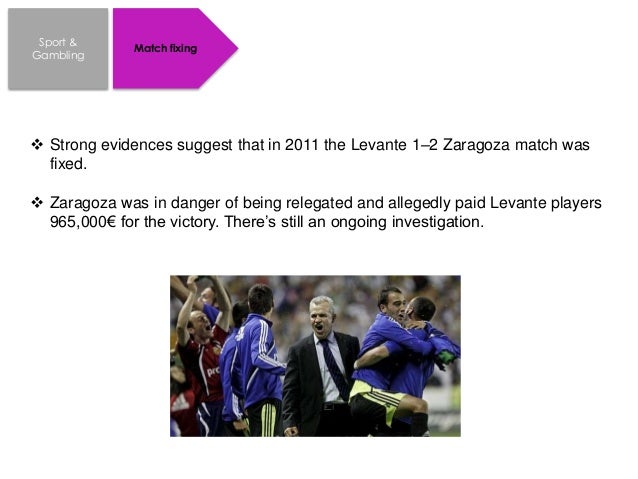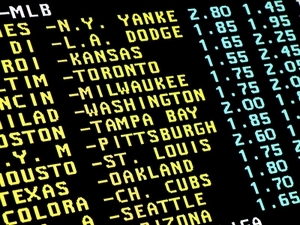Sports Gambling Explained

Sports Betting Explained – Types of Sports Wagers. Curious about the types of sports bet? Check out William Hill’s guide to sports betting, which covers all the need-to-know topics and terms. Learn about all popular types of bets, including parlays, teaser bets, prop bets, and all the need to know terminology for betting on sports. While all sports employ an over/under betting option, by far the most money wagered on this bet is in football and basketball. Sports like baseball and hockey offer over/under options, but the vast.
While not as popular as betting against the point spread in sports gambling, betting the “over/under” isn’t that far behind. Sometimes you may see this as O/U, over-under, over under or simply referred to as “the over” or “the under.”
What does over under mean in betting?
Simply stated, it is the total of the points scored by both teams. While all sports employ an over/under betting option, by far the most money wagered on this bet is in football and basketball. Sports like baseball and hockey offer over/under options, but the vast majority of bets on those sports in based on the established “money line” to pick a winner at a set price.

Unlike a point spread bet in which you are aligning yourself with one team, you’re betting on both teams – either their offenses or the defenses – when betting the over/under. Sports books set over/under scores on games based upon numerous factors.
In the NFL, most over/under scores are set in the low-to-mid 40s.In college football, over/under scores are usually in the high-40 to low 50s – in the Big 12, the land that defense forgot, it can hit the 60s.In the NBA, a typical over/under tends to hover in the 210 range. In college basketball, a standard over/under is between 140 and 155.The hidden factors that come into play in determining a point spread vary by sport, but have common themes. Recent team history is a primary factor that sports books like to exploit. Sports by their nature are a reflective business based on developing trends from previous games (“getting on a roll”) and, if a football team has scored 40-plus points in three straight games, the over/under is going to be higher because sports bettors tend to believe that trends are going to continue. It’s human nature…until they don’t.
If a critical player – a quarterback in football or a dominant scorer in basketball – is out or playing injured, the over/under will drop.
Other factors critical in setting the over/under number include weather (where applicable), an undefinable history between teams (you know Steelers-Ravens games are going to be physical bloodbaths) and injuries that may not jump out to casual fans that mean a lot sports books are all factors that go into creating and setting an over/under line that will draw an even number of fans to both sides of the number.
The key to betting the over/under is to look at a slate of games without knowing what the over/under is and set what you believe it should be based on your knowledge of those two teams. The ones that differ the most from what you think should be are the ones to place your bets on.

One final note that has been a mantra of those who bet the over/under with some consistency – every game is under until it goes over.
If you’re new to sports betting, start with picking and choosing games you’re convinced should go under and get an understanding of how late-game fireworks can botch your plans.
As a fan, you don’t care if your team wins by a point or 100. A win is a win, though that 100-point win would be a little easier on the nerves.

In sports betting, how much a team wins by is usually all that matters.
The most popular way to bet for the two most popular sports, basketball and football, is with the point spread, also known as the “side.” Most baseball, hockey and soccer bets are on the moneyline, which is betting on a team to win straight up with adjusted odds. Football and basketball have moneyline bets available too, but most people will take the point spread.
The concept can be a bit confusing if you’ve never dabbled in sports betting before.
Why bet with the point spread?
The point spread was created to attract more action on a game. When the San Francisco 49ers are expected to blow out the Arizona Cardinals, it’s not enticing to lay $300 to win $100 on a moneyline. But when the 49ers are 11-point favorites and each side is -110 odds? That’s much easier.
Sports Gambling Explained
In that example, the 49ers are spotting the Cardinals 11 points before the game starts, at least for bettors. The 49ers have to win by 12 or more points to cover the spread. If the Cardinals win or lose by 10 or less, that side wins the bet. If the game lands on 11, like a 21-10 49ers win, it’s a push and all bets are refunded. If you see a -11 that means that team is favored, and +11 means you’re taking the underdog.
Nothing sharpens your math skills better than trying to figure out how big your lead as a bettor is if you have a 22.5-point basketball underdog that is losing 90-72.
The problem with the point spread can be when a team — which really doesn’t care that you bet the favorite at -11 — has a 14-point lead but gives up a meaningless score at the end to win by only seven points. They’re still happy with the win. You, as a bettor, are not.
© Provided by Yahoo! Sports Sportsbooks have large boards that display point spreads for all games that day. (AP Photo/John Locher, File)Betting Explained
Point spreads lead to bad beats
The most infamous example of a bad beat with the point spread probably came in the 2004 Final Four at the NCAA men’s basketball tournament.
Sports Gambling Terms Explained
Duke was a 2.5-point underdog against UConn. The Huskies rallied late and took a 79-75 lead on a free throw with 3.2 seconds left. The game itself was over; Duke couldn’t score twice in a few seconds. But Duke guard Chris Duhon pulled up for a running 3-pointer just over the half-court line and banked it in at the buzzer. Duke lost 79-78, but bettors who had Duke and 2.5 points won. March Madness is a huge event for bettors, and reports at the time estimated that Duhon’s “meaningless” shot resulted in a $30 or $40 million swing in Nevada. UConn players celebrated at the final buzzer. UConn bettors doubled over in pain. That’s the difference between betting the moneyline and the point spread.
Explain Sports Betting Lines
Baseball and hockey have point spreads too, the “run line” in baseball and “puck line” in hockey. It’s generally 1.5 with odds adjusting accordingly. Taking a big baseball favorite at -1.5 runs can make the odds more palatable. Of course, betting the New York Yankees at -1.5 to bring down the odds from -190 to -110 isn’t too fun when they win 4-3 and you don’t cash a bet.
Sports Betting Explained Plus Minus
Betting on the point spread is the most common way to wager on sports. And the first time you take a favorite that wins the game but doesn’t cover the spread, you’ll understand every bettor’s heartbreak.